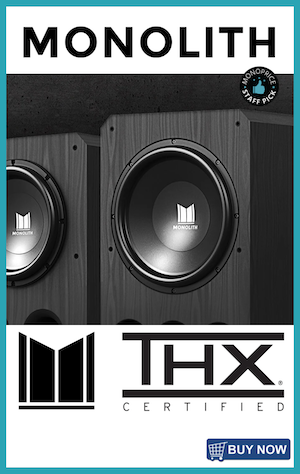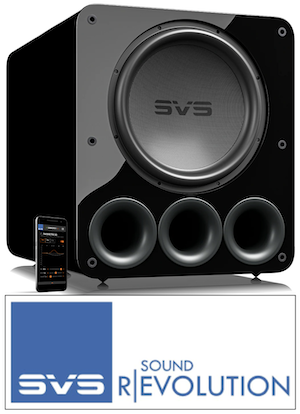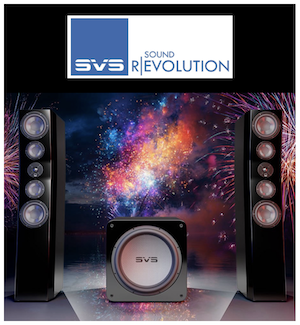Wayne A. Pflughaupt
Moderator
More
- Preamp, Processor or Receiver
- Yamaha CX-A5000 A/V Preamp / Processor
- Main Amp
- Yamaha RX-Z9 AV Receiver (as multichannel amp)
- Universal / Blu-ray / CD Player
- Denon DCT-3313 UDCI Universal Disc Player
- Streaming Equipment
- Roku Express
- Front Speakers
- Canton Karat 920
- Front Wide Speakers
- Realistic Minimus 7 (front EFX speakers)
- Center Channel Speaker
- Canton Karat 920
- Surround Speakers
- Canton Plus D
- Surround Back Speakers
- Yamaha YDP2006 Digital Parametric EQ (front mains)
- Front Height Speakers
- Yamaha YDP2006 Digital Parametric EQ (surrounds)
- Rear Height Speakers
- Yamaha YDP2006 Digital Parametric EQ (sub)
- Subwoofers
- Hsu ULS-15 MKII
- Other Speakers
- Adcom ACE-515 (for power management)
- Screen
- Pioneer PDP-6010FD 60" Plasma TV
- Video Display Device
- Yamaha DT-2 (digital clock display)
- Remote Control
- Stock Yamaha Remote
- Other Equipment
- Audio Control R130 Real Time Analyzer
Electro-Voice ZX1-90 PA Speaker (Informal Review)
July 2020Recently someone at AVS Forum asked me to do a brief review of my Electro-Voice ZX1-90 speaker. He thought it would be of some value to the cadre of home theater enthusiasts who are interested in using pro-audio speakers in their systems. As I understand, the attraction some have to speakers of this type is their typically high output and dynamic range. This is an informal review, as I only have one of these speakers and as such I can only comment on sound quality, not imaging capabilities.
Overview
Electro-Voice (a.k.a. EV) has sold the ZX1-90 speaker for a number of years. I think I’ve had mine for at least seven or eight. I originally bought it to use as a bass guitar monitor for playing on stage in venues where the house PA system has capable subwoofers, meaning I only need to be able to hear myself rather than cover the entire room with my large full-range speaker system (consisting of a Genzler top and EAW subwoofer). I got the ZX on recommendation from someone on the Talkbass Forum who claimed that despite its small size, its bass output was sufficient to serve as a bass guitar monitor. I’d have to say the guy was spot-on in that regard.
The ZX1-90 is a small speaker with an 8” woofer and horn-loaded titanium compression high-frequency driver, according to EV’s web page. Unlike traditional home speakers, the cabinet has an angled back to accommodate horizontal placement (a common orientation for stage monitors), as well as large rubber feet for vertical use.
EV specs the ZX at 60 Hz – 20kHz, -3 dB, and -10 dB at 48 Hz. Sensitivity is given at 92 dB and maximum output at an astounding 123 dB SPL. Nominal impedance is spec’d at 8-ohms and minimum impedance as 6-ohms. That second figure is extremely useful – would that home speaker manufacturers gave us a spec like that. Power handling is stated at 200 watts continuous and 400 watts program. The speaker is 18” high, 11” wide, and 10.5” deep, and weighs 18.5 lbs. In addition to standard black, the ZX can also be had in white. EV also offers an active version of the same speaker, the ZXA1-90.
The ZX1-90 only has Speakon connections on its back panel, which means connecting it to my HT system was going to be a hassle. Thus, to simplify things I resurrected my old Nakamichi CD player from the closet and connected it straight to a small amp I use for practicing at home with this speaker, a Crest Audio PA-150. The PA150 is designed for permanent installations and is rated at 75 watts per channel into 4, 8, or 16 ohms. As you can see in the pictures, I had to turn the amp around backwards, as the gain controls, which were going to control the volume during this evaluation, are rear-access.
By the way, with no signal to the amp and the gain all the way up, the PA-150 was dead silent. I mean, zero noise with a super-high efficiency speaker connected to it. I got the same results with the Crest Pro7200 amp I picked up earlier this year to power my main stage rig, again with this speaker. That one puts out 600 watts at 8-ohms and 1,000 at 4-ohms. Obviously Crest’s reputation for making top-flight amplifiers is well deserved. Highly recommended if you can afford them. (Or, be a cheapskate like me and get them used.)
The ZX’s drivers are housed in a hard plastic cabinet that I’m confident is very durable. However, it produces something of a hollow sound with the knuckle-rap test. The back of the cabinet has a wide recessed slot at the top that functions as something of a handle. However, it’s a smooth surface, so it would be easy for the speaker to slip out of your hand. I’d say it’s only useful for lifting the speaker, for subsequent carrying with two hands.
Throw-Down Test Rig
Listening Evaluation
The only listening evaluation I did was with CDs, as movies weren’t practical. The discs I used were Dave Grusin’s Homage to Duke, Special EFX’s Collection and Mary Black’s Babes in the Wood. I chose these recordings because they all have excellent sound quality and dynamics, the latter achieved with less compression than you typically find in music recordings.
My first impressions with “Satin Doll” from Homage to Duke was that the bass and horns sounded great. Indeed, on this track my notes included the comment, “Has better midrange than any 8” woofer has a right to.”
However, I felt the highs were subdued. I also had the same feelings on the other two tracks I auditioned extensively, “Dancing with a Ghost” from Special EFX’s Collection and “The Dimming of the Day” from Mary Black’s Babes in the Wood. The highs just didn’t “pop.”
However, I should note that I’m in my early 60s, so it’s very possible that the highs will sound just fine for younger folks.
On the “Dancing with a Ghost” track the bass was tight and sounded really good, as it was with the Dave Grusin song. However, with “Dimming of the Day” I felt the midrange was a bit much. Not bad sounding, just a bit “thick.”
For the sake of comparison, I dropped the Mary Black and Special EFX discs in my main system with Canton Karat 920 speakers. It was immediately apparent that the Cantons delivered more detail and nuance in Mary Black’s voice. And the highs were definitely much better on both tracks – lots of “sparkle.” It should be noted that the main system EQ was running flat, save a few dB boost on the AVR’s bass tone control, which obviously has no effect on the high frequencies.
Since the main attraction to pro speakers is their dynamics, I decided crank the EV up and see what it would do. With the gain on the amp all the way up, I observed that the Crest’s limit light was coming on from time to time. I was able to hit 92 dB on my SPL meter, which is a bit louder than I’d ever want to listen to anything. And this from a 75 watt amp! Keep in mind that EV rates this speaker as being able to handle 400 watts program.
To better evaluate dynamics, I compared the EV to my Cantons, both level-matched, and (again) with the Crest’s gain again cranked to max. The Cantons I thought did a great job during the most dynamic passages, but the EV did seem to have a bit more “bite.” To be fair, the EV was saddled with an amp that was putting out all it could, so I wouldn’t be surprised if some more power would make the EV pull ahead substantially in the “part your hair” department.
In-Room Measurements
After the listening session I took an REW measurement of both the EV and Canton speakers, which strangely gives more questions than answers. The red trace is the EV, the blue one the Canton. The traces are off-set for better comparison, and smoothed for 1/3-octave, which for full-range I’ve always felt gives a graph that looks more like what you actually hear.
Graph – EV ZX1-90 vs. Canton Karat 920
At first I thought the source of the EV’s pronounced midrange was the bump at 450 Hz. I’d have to say that was the range in which I was hearing it. However, adding in the Canton trace you can see it displays the same thing. So we can chalk that one up to the room or location. Except, I wasn’t hearing it with the Cantons – they sound very smooth and natural through the midrange.
Typically the hump the EV has just south of 2 kHz would make vocals sound “forward,” but I wasn’t hearing that at all. However, it may explain why the horns on the Dave Grusin track sounded so good.
Most mystifying is what the graph shows for the highest frequencies. The highs on the EV sounded dull to me, while they “popped” with the Cantons. Yet, the graphs shows that the EV’s highs are notably elevated compared to the 920s.
I think the takeaway here is that you can’t necessarily get the full picture of a speaker’s capability from a graph.
The graph also “says” you should probably EQ the 80 Hz bass hump out of the EV, but I would expect the result would be that the bass isn’t not going to sound nearly as good if you do that. Personally I’d leave it alone.
The Verdict
I’d have to say that overall the EV sounds great for a PA speaker. For some listeners it may require a slight EQ boost in the high end, but on the whole it’s very smooth and natural with none of the glaring deficiencies that have been common in PA speakers over the years, such as “honking” midrange or “raspy” sibilants. Its sound quality certainly belies the stock audiophile requirement of super-ridged cabinet construction.
However, for me it isn’t detailed enough to deliver the subtle nuances of well-recorded music. Nevertheless, I expect that those considering a speaker like this for their home theater systems care more about movies than music, so they should be happy with this speaker. If Electro-Voice’s published specs are anything close to accurate, the ZX1-90 will effortlessly deliver clean output louder than anyone would ever want.
Oh yes – it bears noting that speakers with high sensitivity require high-quality electronics that are dead silent. Speakers with regular or low efficiency, the most common type used for home audio, can render equipment with less-than-stellar background noise levels acceptable for use. However, speakers like the ZX1-90 will be brutally unforgiving of such equipment, and will get you audible hiss in high definition.
Random pictures from the internet of the EV XZ1-90 speaker follow.
Last edited:












